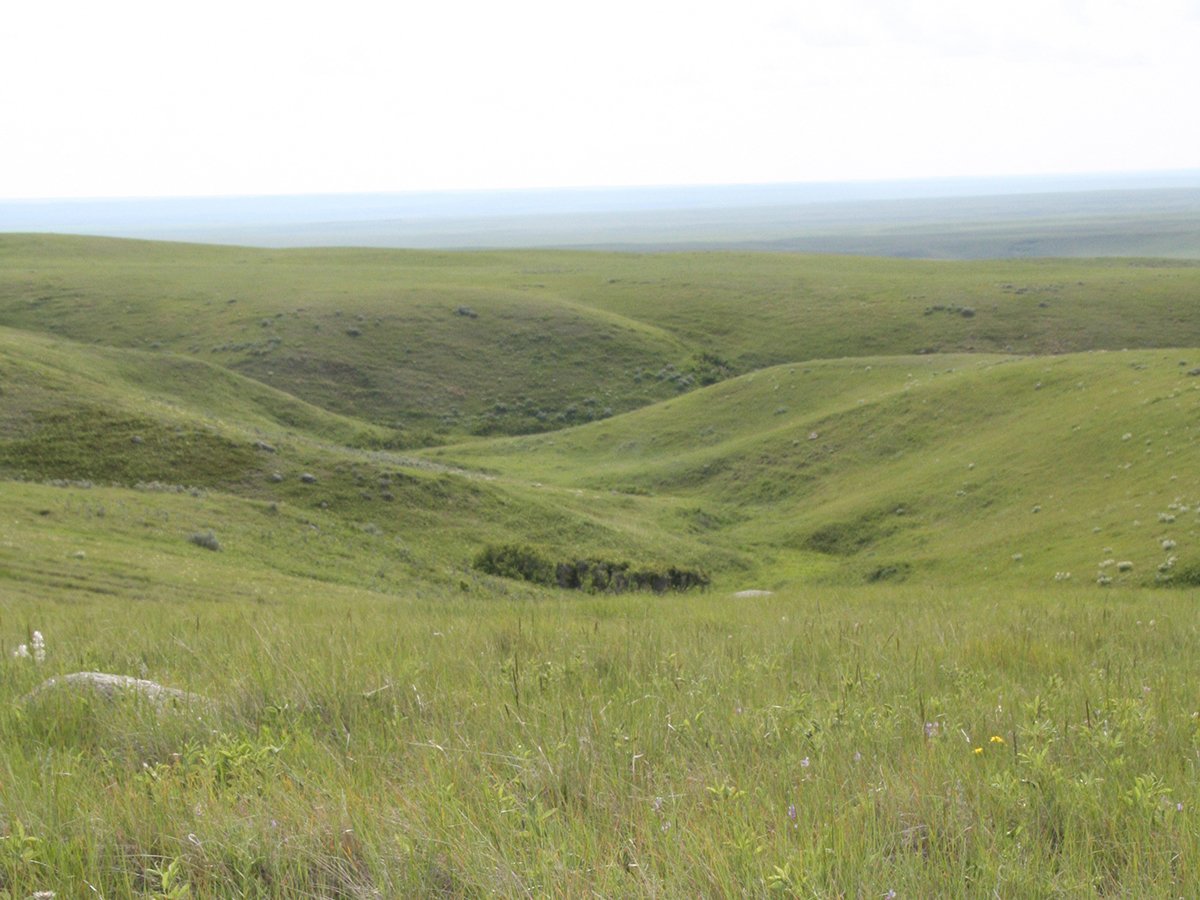Parasite spreading | Cattle must be treated with a flukicide to prevent flukes from affecting lungs, heart and other organs
STEINBACH, Man. — When Wayne Tomlinson recently dropped a seven kilogram cow liver on a table inside a cattle sorting shed, he immediately had the attention of the 60 producers and industry representatives in the room.
Tomlinson, an extension veterinarian with Manitoba Agriculture, used the organ to talk about liver flukes during the Manitoba Pasture Tour in late July.
Liver flukes have been causing chronic infection and killing cattle in northwestern Minnesota and southeastern Manitoba for the last several years.
However, the parasite was recently found in cattle in drier parts of Manitoba, including a dairy cow in St. Claude and in two Manitoba cattle.
Read Also

Alberta irrigation project on grasslands approved
Environmental concerns raised by Alberta conservation groups over irrigation expansion project within rural municipality
The infected animals near McCreary were in a feedlot, so the cattle may have originated in the southeast. However, the cow from St. Claude was a local animal.
Cattle producers outside of the southeast may still think liver flukes won’t become an issue in their area, but that assumption may be a mistake, Tomlinson said.
“We think it has the potential to spread to other parts of the province. So we might as well learn how to deal with it now,” he said.
“It has spread from Michigan to Minnesota to southeastern Manitoba. There is no reason to think that it will stop there.”
Tomlinson said he’s getting more calls from cattle producers outside of the southeast seeking information about flukes.
“If I own a feedlot in Hamiota, Man., do I have to be concerned if (cattle) come from an area where they have liver flukes?”
As Tomlinson sliced into the beef liver, producers inside the cattle shed edged closer to the table for a better look. After cutting out a piece of the diseased organ, the vet held it up so everyone could see the pockmarks and holes in the liver.
Jerome Burkel, who runs a feed mill in northwestern Minnesota and is a self taught expert on flukes, said most of the flukes in southeastern Manitoba and northwestern Minnesota are actually deer flukes rather than liver flukes.
“The deer flukes are much more aggressive. They bore back and forth through the liver,” he said. “Ninety-five percent of what we’re dealing with, in the northern tier states and Canada, is deer fluke.”
According to the University of Minnesota extension service, cattle ranchers should expect production losses if their animals are infected with flukes. Losses include lower feed conversion, reduced milk production, reduced average daily gain and lower weaning weights.
However, Burkel said the parasite will spread beyond the liver in the acute phase of the disease into the lungs, heart and other organs, which kills the animal.
Two years ago, a producer in southeastern Manitoba with 2,000 feeder cattle on pasture lost several dozen animals to flukes, he added.
However, now that the disease is prevalent, most cattle producers in southeastern Manitoba have taken aggressive action to manage flukes.
“People are more aware of it,” Burkel said. “They’re following treatment protocols. If they have a heavy infestation they’re treating them with a parasitic four times a year. Otherwise, they’re doing the spring and fall.”
Cattle producers typically use Ivomec Plus, an injectable, or Valbazen, a drench, to treat cattle for flukes. However, Burkel said a flukicide is only one element of managing the disease.
He said producers should also:
- consider feeding a mineral that is high in zinc and copper. If residual levels of copper and zinc in the liver are high, it’s a less attractive environment for flukes
- rotate pastures to break the disease cycle
- rotate flukicides to prevent resistance
- apply a dewormer before the flukicide so that the flukicide can act solely on the flukes
- try to keep cattle out of marshy areas
Liver flukes are difficult to detect because they can be confirmed only by a liver biopsy, a post-mortem or by inspecting the liver at slaughter, but producers outside southeastern Manitoba need to monitor their cattle for signs of the disease, Tomlinson said.
However, it’s hard to distinguish conditions such as poor weight gain from the symptoms of other diseases, so if an animal dies producers should consider a post-mortem to determine if flukes have infected their herd, Burkel said.
Story of flukes
- Liver flukes, which resemble leeches, lead a complex life before they wind up in the liver of cattle. The flukes exist in white-tailed deer and other cervids in southeastern Manitoba and northwestern Minnesota. The deer pass the fluke eggs in feces, which need shallow water to hatch.
- Once in a swamp or other shallow body of water, the eggs develop into free swimming organisms called miracidium. The miracidium enter snails, which serve as an intermediate host.
- The snails then shed a form of the tadpole-like form of the fluke. The tadpoles live on green plants, and cattle pick up the liver flukes as they graze on the forage.
- Sometimes, ants eat the organism emitted from the snails. That organism commandeers the ant’s nervous system, compelling it to climb to the top of tall grass, where it is consumed by cattle.


















